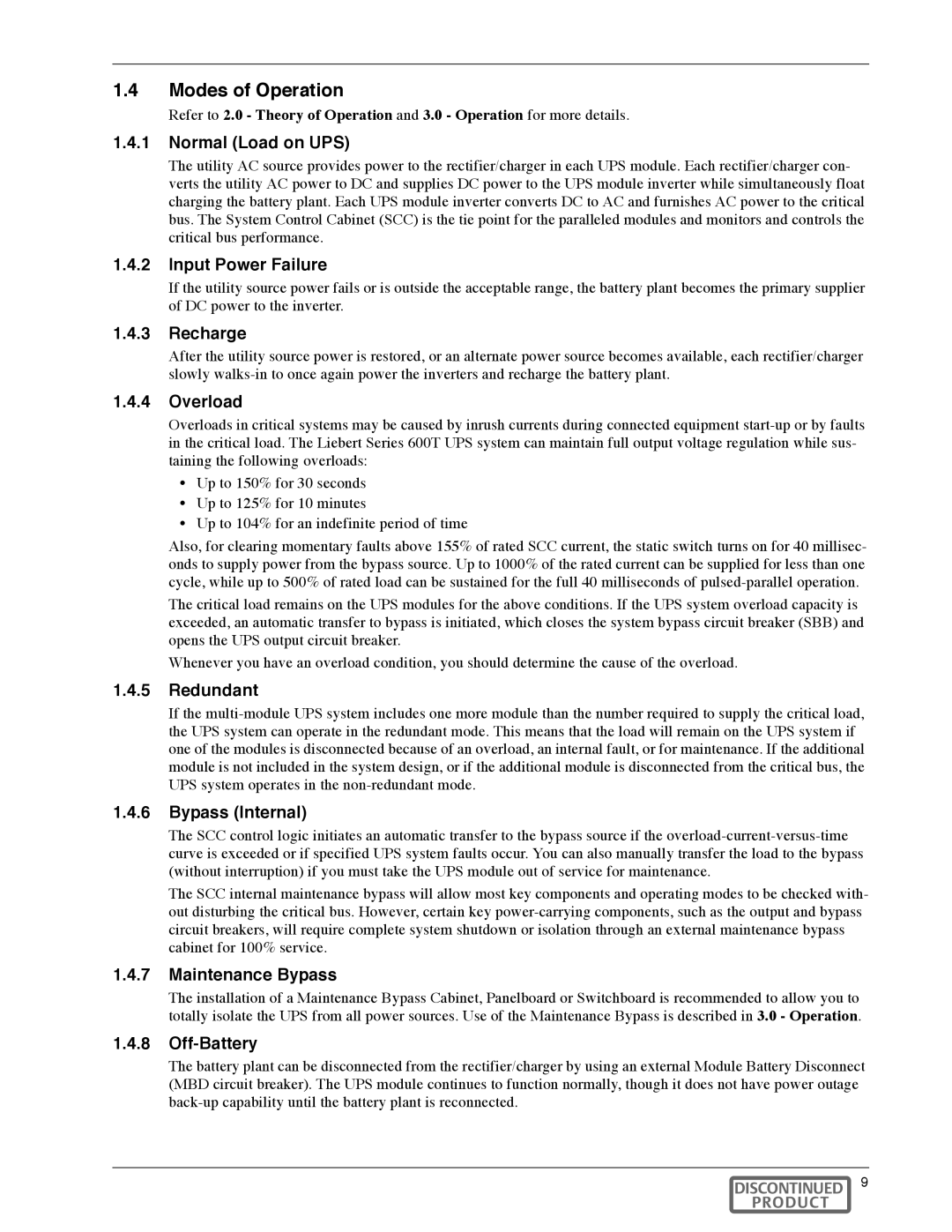
1.4Modes of Operation
Refer to 2.0 - Theory of Operation and 3.0 - Operation for more details.
1.4.1Normal (Load on UPS)
The utility AC source provides power to the rectifier/charger in each UPS module. Each rectifier/charger con- verts the utility AC power to DC and supplies DC power to the UPS module inverter while simultaneously float charging the battery plant. Each UPS module inverter converts DC to AC and furnishes AC power to the critical bus. The System Control Cabinet (SCC) is the tie point for the paralleled modules and monitors and controls the critical bus performance.
1.4.2Input Power Failure
If the utility source power fails or is outside the acceptable range, the battery plant becomes the primary supplier of DC power to the inverter.
1.4.3Recharge
After the utility source power is restored, or an alternate power source becomes available, each rectifier/charger slowly
1.4.4Overload
Overloads in critical systems may be caused by inrush currents during connected equipment
•Up to 150% for 30 seconds
•Up to 125% for 10 minutes
•Up to 104% for an indefinite period of time
Also, for clearing momentary faults above 155% of rated SCC current, the static switch turns on for 40 millisec- onds to supply power from the bypass source. Up to 1000% of the rated current can be supplied for less than one cycle, while up to 500% of rated load can be sustained for the full 40 milliseconds of
Whenever you have an overload condition, you should determine the cause of the overload.
1.4.5Redundant
If the
1.4.6Bypass (Internal)
The SCC control logic initiates an automatic transfer to the bypass source if the
The SCC internal maintenance bypass will allow most key components and operating modes to be checked with- out disturbing the critical bus. However, certain key
1.4.7Maintenance Bypass
The installation of a Maintenance Bypass Cabinet, Panelboard or Switchboard is recommended to allow you to totally isolate the UPS from all power sources. Use of the Maintenance Bypass is described in 3.0 - Operation.
1.4.8Off-Battery
The battery plant can be disconnected from the rectifier/charger by using an external Module Battery Disconnect (MBD circuit breaker). The UPS module continues to function normally, though it does not have power outage
Introduction 9
